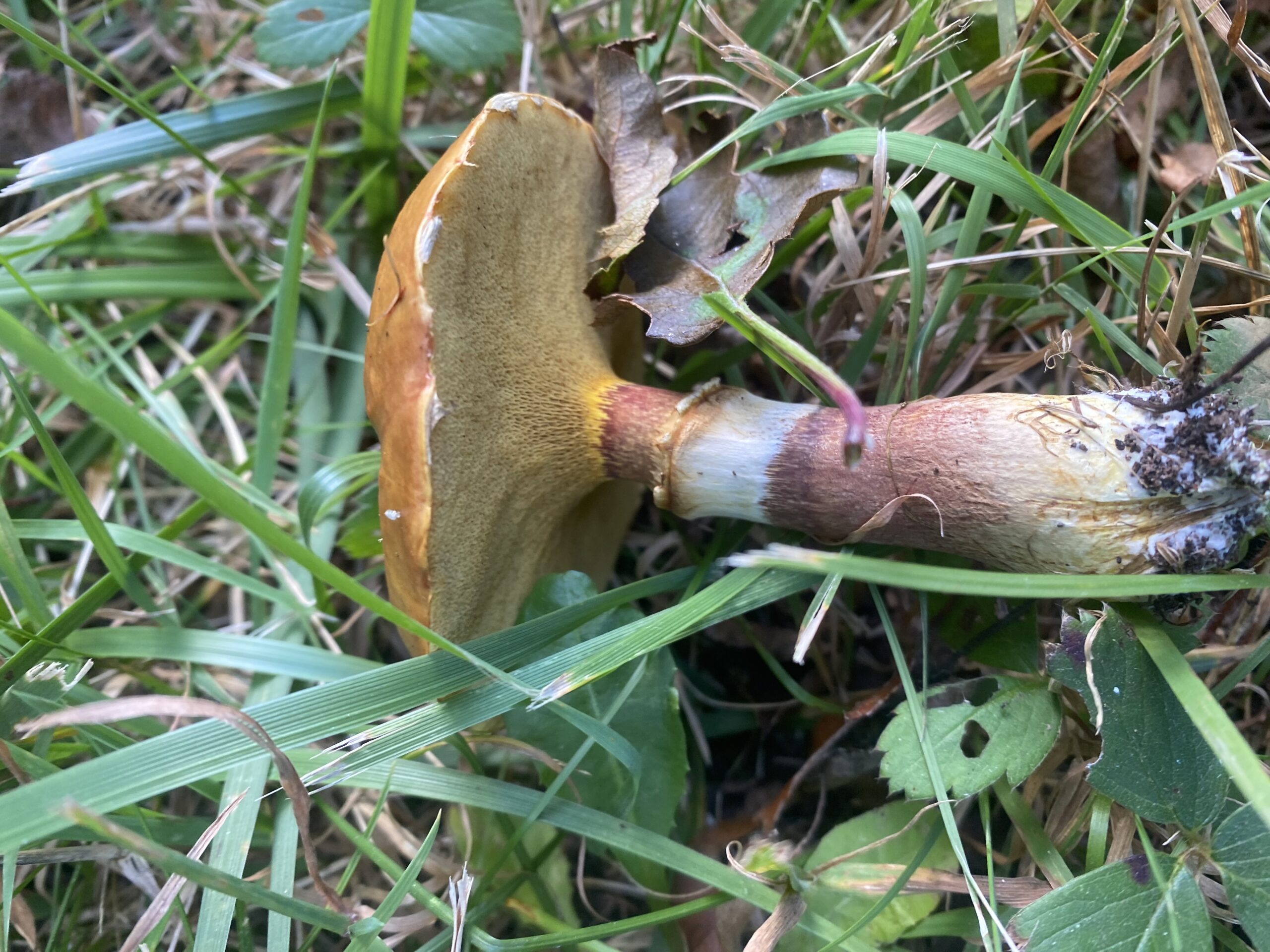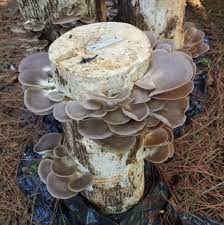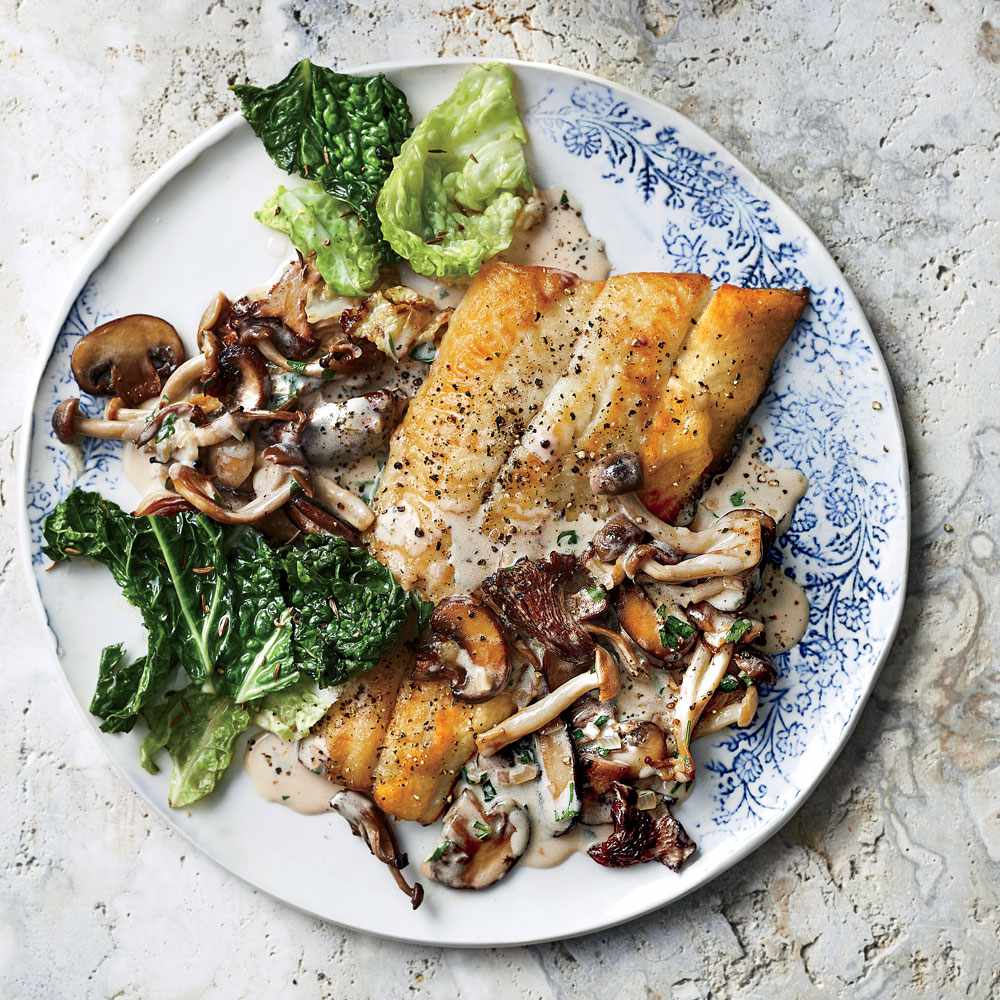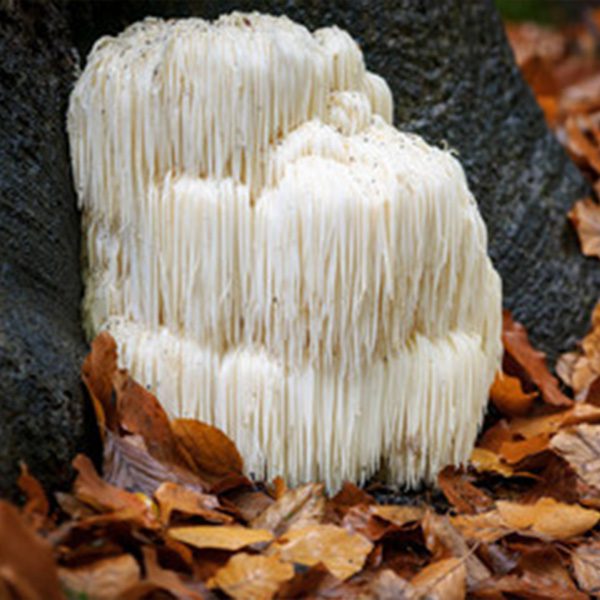Wine caps (Stropharia rugosoannulata) - The gardeners best kept secret
And how you can grow your own...
The wine cap mushroom is indeed a well-kept secret that every gardener should know about. With their ease of cultivation, culinary versatility, ecological benefits, and aesthetic appeal, they offer a multitude of reasons to incorporate them into your garden. Whether you’re a seasoned gardener or just starting out, wine cap mushrooms are a delightful addition to any garden landscape.
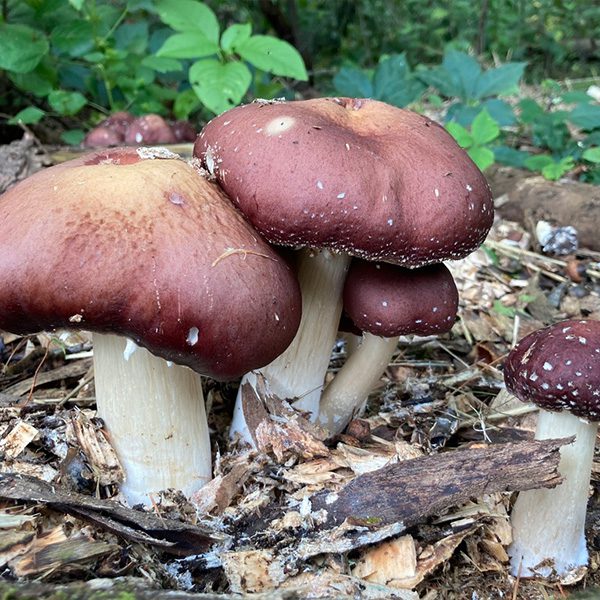
- Easy cultivation: Wine cap mushrooms are remarkably easy to cultivate. They thrive in a variety of conditions, making them suitable for both novice and experienced gardeners alike. They can be grown in mulch beds, wood chips, compost piles, or straw bales often without needing much attention once established.
- Nutrient cycling and soil health: These mushrooms play a vital role in the garden ecosystem by breaking down organic matter like wood chips, straw, and compost. By doing so, they help recycle nutrients, improving soil health and fertility over time.
- Edibility: Not only are wine cap mushrooms easy to grow, but they’re also delicious and nutritious. With a flavor profile that is earthy, nutty, and somewhat meaty, they make a delectable addition to various dishes, from stir-fries to soups and risottos.
- Abundant harvests: Once established, wine cap mushroom patches can yield abundant harvests year after year. This means that with minimal effort, gardeners can enjoy a steady supply of fresh mushrooms right from their own backyard.
- Aesthetic Appeal: Last, but not least! Wine cap mushrooms are stunning additions to the garden. Their distinctive wine-colored caps and robust growth habit make them an attractive addition to any landscape.
Preferred Cultivation Techniques:
Wine caps flourish in a bed-style growing approach, adaptable to various settings to create mushroom mulch effortlessly. They can endure more sunlight than many other cultivated mushrooms, serving as robust allies in bolstering plant and soil vitality. In our view, they’re exceptionally suited for garden cultivation. If outdoor space is limited, container growing is a viable option as well.
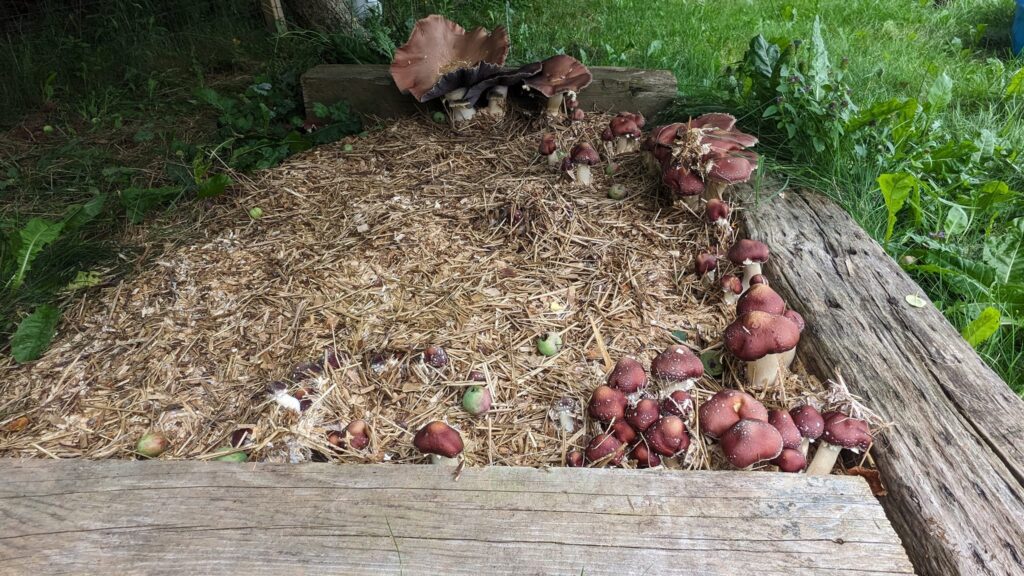
To establish a mushroom bed, begin by selecting a suitable site. Wine caps can thrive in diverse environments given adequate nutrition and hydration. When selecting a full-sun site, consider using plants to provide partial shade, creating a favorable microclimate. We particularly recommend planting them around broad-leaved or bushy plants like cucurbits, large brassicas, and nightshades. They also complement existing mulch around perennials and trees. Adapt the cultivation approach to suit your specific environment.
Once the site is selected, clear debris and unwanted vegetation from the site. Cardboard can be put down at the bottom most layer to suppress weeds. Next, layer approximately 2 inches of wood chips, straw, or small branches followed by an even distribution of wine cap spawn. The wine cap spawn should be completely covered in your mulch to protect the delicate mycelium from drying out. Thoroughly water the bed to ensure proper substrate hydration, continuing regular watering akin to vegetable care for at least the initial 4 weeks to establish the bed. A deep watering every other day should suffice. While fungi thrive in a moist environment, it’s essential to avoid waterlogging.
Temperature: Wine caps can be inoculated once daytime temperatures consistently remain above freezing, up to four weeks before the onset of frost. They prefer fruiting during transitional seasons when temperatures range between 50-70 degrees Fahrenheit, particularly following heavy rain or spring flooding. Growth may slow during peak heat but resumes with adequate hydration.
Mycelium Development: Initially white to cream-colored, wine cap mycelium expands linearly and emits a sweet aroma. Compared to oyster mushrooms, wine caps exhibit steady but gradual growth. As the mycelium matures over the first few weeks, it develops a thicker, rope-like structure known as rhizomorphs. These can be observed attached to the base of mature mushrooms. When harvesting, preserve these rhizomorphic stem butts for further substrate inoculation.
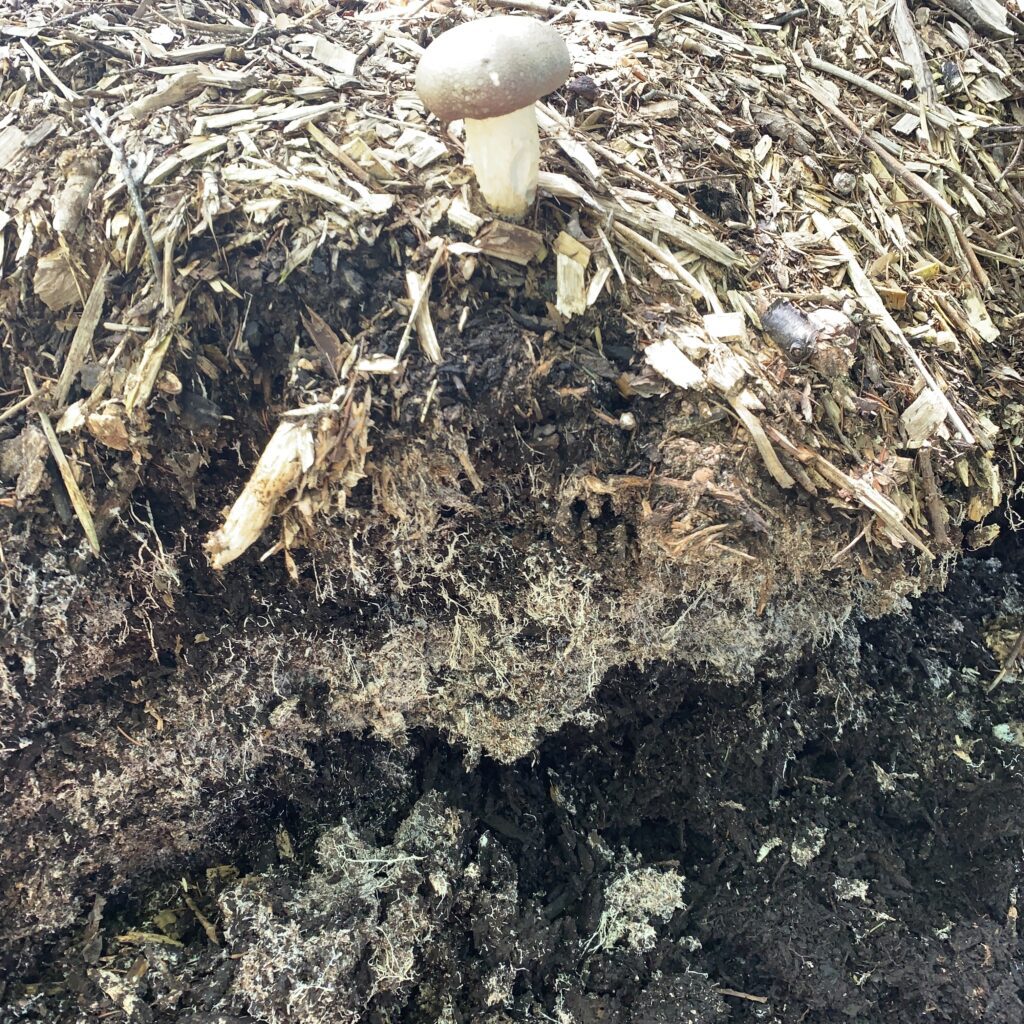
Fruiting Details: Depending on the timing of inoculation and the inoculation rate, fruiting may occur within the same season. This rapid turnaround, compared to log cultivation, is advantageous. In temperate climates, inoculation in spring can yield fruits as early as mid-summer through fall. Plan for a minimum of 3-6 months for the bed to fully colonize before mushroom formation. Expect prolific clusters, especially after rain and temperature shifts. Monitor growth closely to harvest promptly and prevent predation by other mushroom enthusiasts such as deer, slugs, or woodchucks.
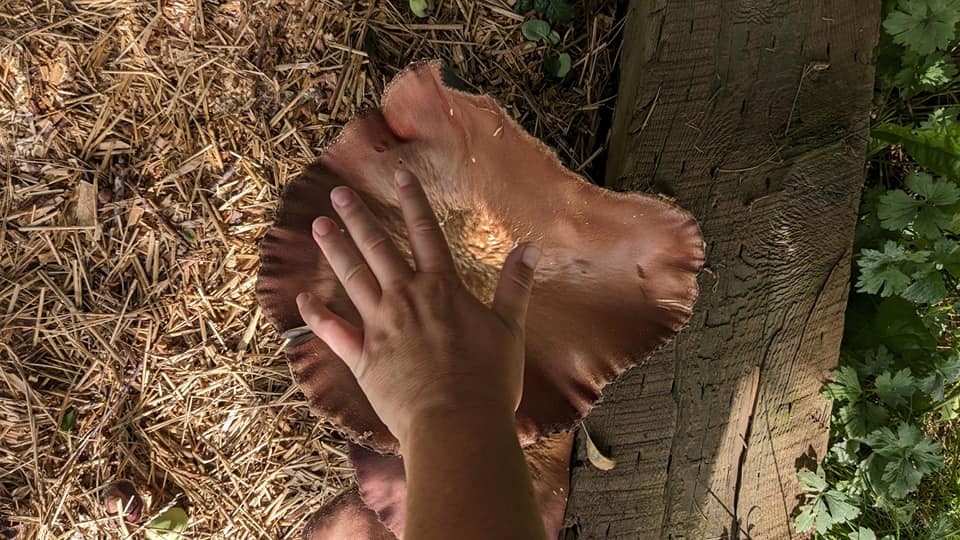
Harvesting: Wine caps can be harvested by cutting the stem near the base or gently twisting to release from the mycelial anchor. Retain trimmings for spreading onto cardboard or additional substrate. Harvesting during the button stage, while caps are tightly curled, ensures tenderness and flavor, with reduced risk of infestation. For optimal edibility, harvest before the caps expand fully or before the veil separates from the stem.
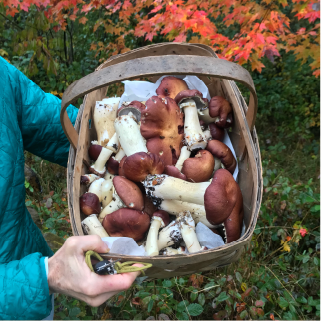
As wine caps mature, they can attain substantial sizes, though larger mushrooms may have a milder flavor and fibrous stems. For market cultivation, these impressive specimens are excellent conversation starters. Wine caps can be refrigerated for approximately one week, longer if harvested at the button stage.


